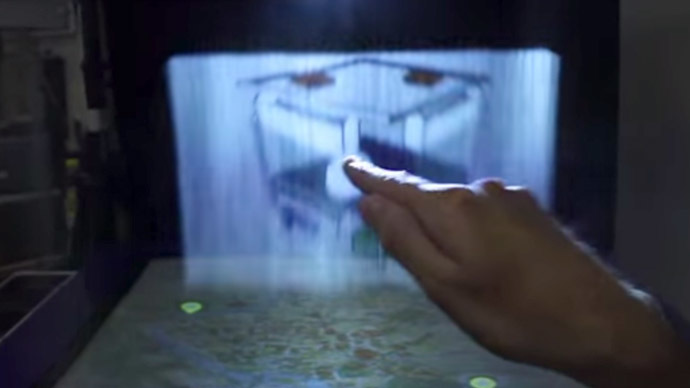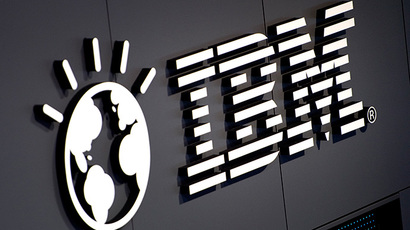Misty-eyed: Nifty holographic computer interface thinks BIG with thin air

Imagine if you could interface with your computer files by tapping nothing but thin air. This is what awaits the world when the concept – a foggy, holographic environment – is unveiled at the world’s top conference on human-computer interaction.
A “Reach-through Personal Screens for Tabletops,” as a promo video describes it, MisTable is a two-part interface that consists of a tabletop display complemented by a holographic projection consisting of a moveable mist.
There, a user will be able to move the images around, push them right onto the table, interact with the area right above the tabletop and do a number of other manipulations using the see-through and reach-through mist screen.
Diego Martinez Plasencia and Sriram Subramanian, tech wizards at the University of Bristol’s BIG project (Bristol Interaction and Graphics) describe the device as “personal screens, built using fog” that allow “a range of customizations and novel interactions such as presenting 2D personal contents on the screen, 3D contents above the tabletop or augmenting and relighting tangible objects differently for each user.”
“Besides, having a personal screen for each user allows us to customize the view of each of them according to their identity or preferences,” they say. “Finally, the personal screens preserve all well-established tabletop interaction techniques like touch and tangible interactions. We explore the challenges in building such a reach-through system through a proof-of-concept implementation and discuss the possibilities afforded by the system.”
Subramanian is professor of Human-Computer Interaction at BIG. He says that “MisTable broadens the potential of conventional tables in many novel and unique ways,” explaining how this is done and talking about how shared tasks will also be a breeze to work on or opt out of in a group project.
The engine will allow users to move objects anywhere within the field of interaction. And such novel techniques, the BIG folks believe, will herald a new era in group work interaction and collaboration, once the devices hit the shelves.
Unfortunately, before the paper’s presentation at ACM CHI 2014 – the Mecca of tech conferences, to last from April 26 to May 1, very little else is known about the breakthrough devices, not even a possible release date.














